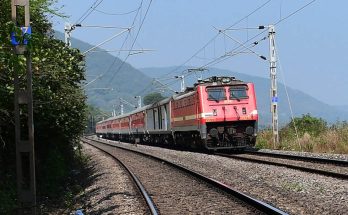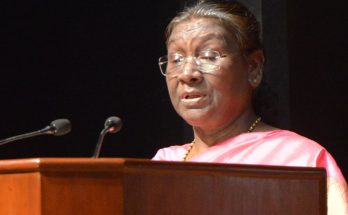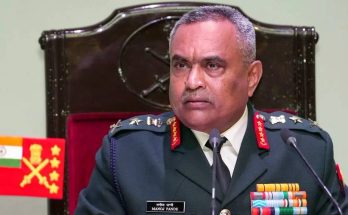By Debabrata Patra
Since last few months, I have been engaged in developing people’s manifesto on various issues in Odisha and in the country. Among this water has been a major issue in the state and nation.
Water for domestic use and water for agriculture has been a key demand for many of the villages we visited in Odisha and elsewhere. Women and children face innumerable hardships when water sources dry up in the summer. In this context, it is essential that the government prioritise the use of water, especially for domestic purpose and agriculture.
The Mahanadi basin (sixth largest in the country) extends over states of Chhattisgarh and Odisha – and comparatively smaller portions of Jharkhand, Maharashtra and Madhya Pradesh – draining an area of 1,41,589 square kilometers. About 53 per cent of the Mahanadi’s catchment area lies in Chhattisgarh and 46 per cent in Odisha. Even before the Mahanadi water dispute between Odisha and Chattisgarh, people along the river basin faced numerous problems, which include pollution of the river, loss of livelihoods, siphoning of water to industries and so on.
Water potential of Mahanadi river basin, which is at 66.64 billion cubic meter (BMC), has dropped a whopping 16.3 per cent of what had been estimated at the Hirakud project design stages in the 1940s. As of now, the percentage of Hirakud dam waters for irrigation is 27.4 per cent and for industrial use is 4 per cent. But still there is shortage of water for both domestic and agricultural use.
Many local groups like the Paschim Odisha Krushak Sangathan Samanway Samiti are fighting against the water diversion from the dam to industries without prioritising water for farmers and river pollution. The diversion of water from Hirakud to many new steel, power and aluminium industries led to huge farmer’s movement in western Odisha. The Odisha government took many steps to address the problem including formation of an expert high level technical committee under the chairmanship of Prof R. Jayseelan, former chairman of the Central Water Commission.
Villagers from Mohammedpur village, 30 minutes drive from Sambalpur and very near to the Hirakud Dam, reported that their water sources were polluted by the nearby industry and village faced acute water scarcity in summer because there is just one tube well. Women walk as many as 5 km three to six times a day to take bath and wash clothes. Villagers also said that they were facing water related diseases because of the pollution.
There is a dumping yard in the village that has polluted the pond nearby. The fishermen in the village also said that the fish production had declined over the years and the news of dams in Chhattisgarh means that they will have less water in future.
There are 12 cities along the polluted river stretches in Chhattisgarh while 20 cities of Odisha are along the polluted stretches. These problems were faced by many villages that I visited in Sambalpur and elsewhere during my professional work. In some areas the ground water level has been decreased to 35 to 50 feet and water bodies created under the Mahatma Gandhi National Rural Employment Generation Scheme (MGNREGS) have been dried up without proper inlet and outlet. There has been a steady loss of livelihood along the Mahanadi and its tributaries, and people have started migrating from the villages to cities.
Other issues in Chattisgarh regarding Mahanadi
Privatisation of a stretch of Sheonath river, the biggest tributary of Mahanadi: The Chhattisgarh government handed over a stretch of the river to a private company Radius Water Ltd. Huge movement built up but Chhattisgarh government persisted with the lease.
No Rabi season irrigation from Hasdeo-Bango Dam: The Hasdeo-Bango reservoir is the second largest reservoir in the Mahanadi basin. It had provision to supply irrigation supply for Rabi crop. But the Chhattisgarh government has stopped Rabi season irrigation to ensure water supply to industries. Thus supply to industries has become the primary objective of the project.
People of the states sincerely hope the water conflicts between both the states end and a better ecological sense prevails in favour of people
Hence the first set of demands on water in people manifesto is:
- Stop water privatisation and re-municipalise water supply services: all forms of privatisation in water supply systems, whether through private operators or public private partnerships (PPPs), must be stopped.
- Enact a law to provide water security to all. This must include provisions to protect water commons like seas, rivers, lakes and streams, all of which are currently being unsustainably encroached, exploited, and polluted.
- Include provisions to strengthen public water institutions and democratise their functioning.
- Along with the law, enact a Water Usage policy at the central and state levels.
In addition to the above it is essential to augment the present water sources, which going for costly infrastructure like big dams. There have been numerous case studies to illustrate the success of water harvesting structures, which ensure good source of water both for domestic and agricultural use. This doesn’t require a very advanced technology but a good traditional wisdom which already exists within the community.
There are many bright examples of the community action by a primitive tribal community towards conservation of rain water in terms of using their indigenous knowledge, skill and local resources – 18 Paudi Bhuyan households of Kiri village in Sundergarh district have constructed small check dam using the local resources and made available of water for irrigation to 36 acres of land. This village has enough water in summer even though the neighbouring villages suffer from water scarcity and drought.
Massive afforestation and community forest management, changes in the cropping patterns in terms of adopting drought resilient traditional millet based agricultural practices would also be necessary for revival of the agricultural sector.
In the areas that I visited in Kandhamal, millets and mixed cropping saved the day for the tribal communities there. An agricultural field in Kandhamal was full of fruit trees laden with mangoes, lemon and vegetables was a sight to behold even in the drought period few years back in 2016. Women collectives practicing climate resilient millet and vegetable cultivation also escaped the drought menace. Even in the drought in 2015-16, farmers in Kandhamal have reported good produce of sorghum and other millets.
So the next demand in the people’s manifesto on water issues is:
Prioritise water harvesting enforcement: This needs to be prioritised by local governments along with the promotion of climate resilient traditional agriculture using traditional seeds. It also necessary to invest in new research and designs for more effective water harvesting and to ensure that all government and private buildings are in line with water harvesting systems.
We sincerely hope that all political parties and new governments both at the state and Centre will support to ensure and prioritise water and food security which is the key to the survival of people dependent on agriculture, fisheries and other livelihoods.
(Debabrata Patra is regional manager of ActionAid at Bhubaneswar. The views are personal)




